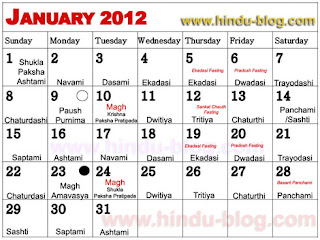Smartha Vs Vaishnava Traditions; And their Ekadasis
If you have been observing Ekadasi fast, you might have, quite like a multitude of other Hindus, come across consecutive days on your Hindu calendar marked as "Ekadasi": the first day will usually be "Smartha Ekadasi" and the next "Vaishnava (or Bhagavat) Ekadasi.
What is the significant difference, if any, between the two?
Smarthas
What and who is a Samrtha
Before we could examine what the difference is between the two, let's start with what "Smartha" (which sometimes spelt "Smarta") is.
It is a Sanskrit word, which denotes the "smartha sampradayat", a liberal or nonsectarian tradition or denomination of the Vedic Hindu religion that accepts all the major Hindu deities as forms of the one Brahman, the Surpeme Being. Vaishnavism, Shaivism, and Shaktism, the other three major Hindu sects, revere Vishnu, Shiva, and Shakti respectively as the Supreme Being. They are, strictly speaking, not all-embracing and cosmopolitan in outlook.
The adherents of the Smartha Sampradayat follow the Vedas and Shastras They are called the Smarthas: they. are followers and propagators of Smriti or religious texts derived from Vedic scriptures. Smartha religion is practiced by people who believed in the authority of the Vedas as well as the basic premise of puranas.
Smarthas believe that theworshiper is free to choose a particular aspect of God to worship so long as the worship practices do not contradict the Vedas and the Smritis. So, an orthodox smartha is unlikely to view gods of non-vedic religions favorably, even though he may hold the religion acceptable to its own traditional followers.
Sri Adi Shankaracharya
 Sri Adi Shankara fathered the Smartha sampradayat. He re-introduced a purer form of Vedic thought. His teachings and tradition form the basis of Smartism, and have influenced Sant Mat lineages. He is the main figure in the tradition of Advaita Vedanta. He was the founder of the Dasanami Sampradaya of Hindu monasticism and Sanmata of Smarta tradition. He introduced the Pancayatana form of worship.Adi Shankara is believed to have propagated the tradition of Shanmata (Sanskrit, meaning Six Opinions). In this six major deities are worshipped.
Sri Adi Shankara fathered the Smartha sampradayat. He re-introduced a purer form of Vedic thought. His teachings and tradition form the basis of Smartism, and have influenced Sant Mat lineages. He is the main figure in the tradition of Advaita Vedanta. He was the founder of the Dasanami Sampradaya of Hindu monasticism and Sanmata of Smarta tradition. He introduced the Pancayatana form of worship.Adi Shankara is believed to have propagated the tradition of Shanmata (Sanskrit, meaning Six Opinions). In this six major deities are worshipped.This is based on the belief in the essential sameness of all deities, the unity of God, and their conceptualization of the myriad deities of India as various manifestations of the one divine power, Brahman.
Smarthas accept and worship the six manifestations of God, (Ganesha, Shiva, Shakti, Vishnu, Surya and Skanda), and the choice of the nature of God is left up to the individual worshiper since different manifestations of God are held to be equivalent.
Some of the prominent Smarta Teachers:
- Mata Sri Mirtanandamayi
- Appaya Dikshitar
- Swami Sivananda
- Swami Haridoss Giri
- Swami Gnanananda
- Paramahansa Yogananda
- Swami Rama
- Govinda Bhagavatpada
- Sri Ramakrishna Paramhahamsa
- Swami Vivekananda
- Brahmananda Saraswati the Shankaracharya of Jyotir Math, the Guru of Transcendental Meditation.
- Jagadguru Swami Sri Bharati Krishna Tirthaji Maharaja. Vedic Mathematics.
- Madhusudana Saraswati
- Jagadguru Sri Sacchidananda Shivabhinava Nrusimha Bharati, Sringeri Sharada Peetam
- Jagadguru Sri Chandrasekhara Bharati III, Sringeri Sharada Peetam
- Jagadguru Sri Abhinava Vidyatirtha, Sringeri Sharada Peetam
- Jagadguru Sri Bharati Tirtha, Sringeri Sharada Peetam
- Chandrashekarendra Saraswati, Kanchi Kamakoti Peetham
- Srimad Raghaveshwara Bharathi Swamiji of Ramachandrapura Mutt, Hosanagara
- Swami Chinmayananda
- Dayananda Saraswati (Chinmaya Mission)
Why Hare Krsnas Say that There is the Only True Way?
The Vaishnavites, on the other hand, regard Sri Krishna (or Krsna) or Vishnu as the only true God, who is worthy of worship, and all other forms of God like Lord Ganesha, Lord Shiva, Lord Subramania, etc., are but Sri Krishna's (or Lord Vishnu's_ subordinates, or mere demi-gods, not worthy of worship. The Vaishnavites believe and assert that only Krishna or Vishnu can grant the ultimate salvation for mankind, "moksha".
The Saivites
In Saktism, emphasis is on the feminine manifestation, through which the male un-manifested, Lord Shiva, is realized.
The Different Schools of Thoughts --- Their Unity and Diversity
The Smartas, like many Saivites and Vaishnavites, consider Surya an aspect of God. The bigoted Saivites and Vaishnavites differ from Smartas, in that they regard Surya as an aspect of Shiva and Vishnu, respectively.
The Vaishnavites consider the sun "Surya Narayana". In Saivite theology, the sun is said to be one of eight forms of Shiva, the Astamurti. Ganesh and Skanda, for many Shaivites, would be aspects of Shakti and Shiva, respectively.
Most Hindus Today Are Smarthas
Smarta Ekadasi
Now, having discussed at length what a "Smartha" is, we are now ready to see the difference between "Smarta and Vaishnava Ekadasis".
Smarta Ekadasi is based on the calculation that when the sunrises if it is the Ekadasi day then it is Smarta Ekadasi.
Bhagavata, or Vaishnava, Ekadashi observance is based on the rule that Dasami or the tenth day during a lunar fortnight should have ended before Arunodaya (96 minutes period before sunrise on the Ekadasi or the 11th day in a lunar fortnight).



Comments
Post a Comment